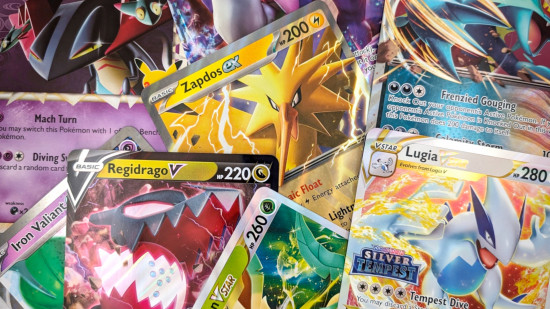How do Pokémon TCG special conditions work? Attacks that poison, burn, paralyze, confuse, or put to sleep your opponents’ Pokémon are crucial to victory in Pokémon TCG battles – here’s how each of these Pokemon card status effects work in the rules, and how to use them in games.
These days, the best Pokémon cards in the game tend to be more reliant on big damage to win, rather than applying conditions, but they’re still an important part of the game, and – used strategically – can help you whittle down some of the highest HP Pokemon cards in your path.
The five Pokémon TCG special conditions are:
How do special conditions work?
In between each turn (so after one player’s turn ends, but before the other player’s turn starts) there is a Pokémon checkup step, in which both players:
- Check for special conditions on their Pokémon, in the order shown above.
- Resolve any abilities or Trainer cards that affect this step.
- Resolve the effects of any special conditions on their Pokémon.
Each condition has a slightly different effect, and is displayed on the tabletop in a different way.
Pokémon TCG Poisoned rules
When a Pokémon has the Poisoned condition, you place a Poisoned token on it (the green one with the little skull as shown above).
Every Pokémon Checkup step, a Poisoned Pokémon takes one damage counter (10 damage). That doesn’t sound like much, but, for Basic Pokémon with low HP totals, it stacks up fast – and the only ways to remove the Poisoned condition are to retreat the Pokémon to your Bench, evolve it, or use an ability or trainer that counters Poisoned.
It’s impossible to get Poisoned more than once at a time – if you ever add a second Poisoned token, it replaces the first one.
Pokémon TCG Burned rules
The Burned condition is a lot like Poisoned, but a bit more randomized. Like Poisoned, you give the card a Burned token to represent it (this one looks like a Band-Aid).
In the next Pokémon Checkup, if your Pokémon is Burned you flip a coin. On heads, you’re A-okay and take no damage. But on tails, the Pokémon takes two damage counters (20 damage)! Like Poisoned, you can only get rid of the burn by evolving or retreating the Pokémon, or using a relevant ability or Trainer card.
Also like Poisoned, Pokémon can’t have two Burned tokens at once – if it gets burned again, the new token replaces the old one.
Pokémon TCG Asleep rules
When your card is Asleep, it lies on its back – you turn it 90 degrees anti clockwise. While a Pokémon is Asleep, it can’t attack or retreat to the Bench.
Every Pokémon Checkup step, you flip a coin for your sleeping Pokémon. On heads, the Pokémon wakes up and loses this condition. On tails, it remains Asleep.
Pokémon TCG Paralyzed rules
When a Pokémon is Paralyzed, it can’t attack or retreat (but you can still use its abilities).
While pretty debilitating, the Paralyzed condition soon wears off on its own. In fact, it just lasts one turn. At the end of your turn, if your Pokémon was Paralyzed at the start of the turn, you remove the Paralyzed condition.
Each special condition has a unique token or orientation associated with it. To demonstrate that a Pokémon is Paralyzed, you turn it 90 degrees clockwise, so it’s effectively sideways on the board.
Pokémon TCG Confused rules
If a Pokémon gets the Confused special condition, you turn it ‘upside down’, so that it’s head is facing you.
Each time a Confused Pokémon attacks, you flip a coin. On heads, the attack works as normal. On tails, you cancel the attack (it has no effects) and your confused Pokémon take three damage counters.
Just like in the videogames, sometimes being Confused does nothing – but if you’re unlucky it can really give your Pokémon a whack.
Do special conditions stack?
Some Pokémon TCG special conditions stack, while others do not. Burned and Poisoned stack with all other conditions, though you can’t have multiple instances of each. However, Confused, Paralyzed, and Asleep cancel each other out. When a new one is applied, the previous one is removed.
That may sound confusing, but fortunately it’s really simple to remember, thanks to the way these conditions are represented in the game: if a special condition is represented with a token, it can be applied alongside other conditions.
If the special condition is represented with an orientation, then it can’t. When a Confused Pokémon is made Asleep, for instance, you simply turn it the right direction – now it’s clearly shown to be Asleep, but not Confused.
What ends Pokémon TCG special conditions?
There are two ways to remove any and all special conditions from a Pokémon:
- Moving the Pokémon out of the Active zone. This doesn’t just mean retreating – anything that causes the Pokémon to move to the bench causes it to lose any special conditions.
- Evolving the Pokémon. When a Pokémon evolves, it retains damage counters, but loses any special conditions that were affecting it.
The Paralyzed special condition ends by itself, while the Asleep condition has a chance to end between each turn. And, as we just saw, certain Pokémon TCG special conditions cancel each other out.
For more help with how to play Pokémon cards, check out our guide to the most powerful Pokémon cards, or this breakdown of the different Pokémon TCG formats.
Source: Wargamer




